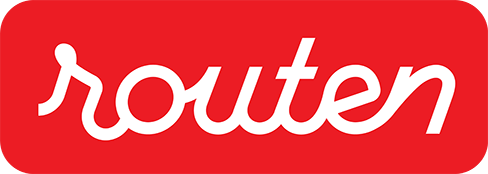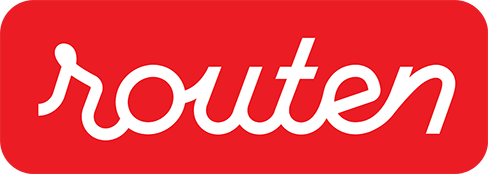How to cycle and walk with nodes?
Easy route-mapping on the network
Cycling and hiking nodes: you can find them all over Flanders and seasoned cyclists and hikers know them like the back of their hand. But what exactly are nodes, where do you find them and, above all, how can you map out a route yourself with all those numbers and signs? You'll never get lost on Flanders' cycling and hiking networks with this guide full of tips for beginners.
What will you learn about nodes in this article?
What is a cycling or hiking node?
Cycling and hiking nodes are useful tools for easily planning your cycling and hiking routes in advance and monitoring them along the way. All over Flanders, provincial tourist boards have selected roads and trails where it is quiet, safe and lovely to cycle or walk. They have mapped out those roads and trails. For cycling, this was done across the entire Flemish provinces, for hiking specifically in hiking-friendly areas, such as areas of nature.
A node sign at each fork in the road
The intersections or forks where roads and trails meet are called nodes. To make it easy for cyclists and hikers along the way, each cycling and hiking node was given a number from 1 to 99. Because the networks are so large, you may encounter the same node number in two different parts of a province. Not only will you encounter the numbers in the terrain on node signs at intersections, they are also on the route network maps associated with each province or hiking area.
A network of nodes
With the cycling and hiking nodes, you map out your own trips on the cycling node and hiking node networks, as they are known. Before you leave, list all the nodes on your trip. Then simply cycle or walk from one node to another.
It really is very hard to get lost: between two nodes, there are also regular signposts with directional arrows, so you will always stay on the right path. You will encounter such a marker every one to one-and-a-half kilometres. Cycling and hiking networks are always signposted in two directions. That means you can go in any direction without any worry.
How were nodes created?
Nodes have been around since 1995. Cycling nodes came about before hiking nodes. They were invented by Hugo Bollen, a former Limburg mining engineer. He wanted to revitalise the Belgian-Limburg mining region for tourism by promoting cycling. In the mines, he watched miners find their way through a node system, and in '95 he took the system above ground. The province advertised itself as 'Cycling Paradise Limburg'.
Other provinces followed suit and today, Flanders is one of the most popular cycling regions in Europe. Every year, more than 10 million trips are made via the cycling nodes in Flanders, together accounting for 16,000 kilometres. The Netherlands soon followed, and 'points-noeuds' are now beginning to flourish in Wallonia as well. Nodes can also be found in Germany and France.
what do nodes look like?
Node signs are rectangular signage boards with a cycling or hiking logo on them, a circled number at the top and two or more other numbers with arrows below. At the very bottom is the name of the network. The circled number is the node number, while the circled numbers below it are the numbers for the next node. The arrows indicate the direction to cycle or walk in to reach that next node (left, right or straight ahead).
In the Flemish provinces, cycling node signs are white with green (except in Limburg, where they are blue); hiking node signs are white with red. There are cycling node signs at least at each change of direction in the route, at a readily visible height, clear of vegetation and at a sufficient distance before intersections or forks in the road. Hiking node signs hang from wooden poles at intersections.
Other signs you may encounter along the way
Looped biking or hiking routes
Besides along nodes, you can also explore the Flemish provinces along separately signposted, looped cycling and hiking routes. You can recognise them by the hexagonal signposts with a cyclist (red) or walker (green) on them, attached to little wooden posts. The signs state the name of the route, the distance and the direction to head in.
During your route, follow the signs for hassle-free cycling or hiking from start to finish. Each cycling and hiking circuit comes with a fold-out map with detailed directions.
Mountain bike trails
An international sign was developed for the signage of mountain bike trails: a triangle with two spheres underneath. Green triangles indicate a route for beginner mountain bikers. The blue ones are ideal for more experienced mountain bikers. The sportiest mountain bikers will get their money's worth on the red one.
Cycling highways
Cycling highways are cycling routes between cities that are up to 15 to 20 km apart. They get you to where you need to be smoothly, safely and comfortably over longer distances. Flanders has 110 of these routes, together accounting for a network of 2,400 kilometres. Besides the infrastructure, the provinces are now building the identity of these routes. You can recognise them by the triangular blue logo with the white F and the cycling highway number.
GR-trails
The GR footpaths are a network of long-distance hiking footpaths across Europe, mainly in France, Belgium, the Netherlands, Great Britain, Germany and Spain. GR are the initials of the Grande Randonnée trails in France and Wallonia, and Grand Route footpaths in Flanders. The basic marking consists very simply of two stripes, one below the other, white or yellow at the top and red at the bottom. It is an international signage method for continuous hiking footpaths.
How to map out a cycling or hiking route on the node network?
Fixed, separately signposted cycling and hiking circuits have one downside: they don't always meet your own needs in terms of distance and composition. Sometimes, you might feel like a short trip with a museum visit and a café; other times, you'll want to cycle for long distances, and all day long. Or for several days in a row.
Cycling and hiking networks offer many opportunities for every type of hiker or cyclist and for every age. Sporty tours with steep climbs, flat stretches, peaceful areas or places with cosy terraces or cafés. You put together your own cycling or hiking menu.
Another big advantage: the flexibility. Depending on the weather, the time you have or whether your legs are in shape, you can expand, shorten or change your route along the way. You can plan your routes with nodes in several ways:
1. With a cycling or hiking network map
Every cycling and hiking network comes with a solid node map. The map side provides a detailed overview of all the nodes and distances, car parks and ideal departure points, cafés, stations and places of interest. The type of road (paved, unpaved, cobblestone, etc.) is also indicated. The node map for the Flemish Ardennes also shows the slopes. The rear side has all the practical information and background on the main sights along the way.
Ready to plot your own journey? Look at the map and note in advance the nodes along which you want to cycle or walk, in the right order. That way, you won't have to constantly pull out your map on the go. For example, write them on a slip you can hang on your handlebars, or a piece of paper for your inside pocket. Tip: always bring your cycling or hiking network map with you on your trip. That way, you can always adjust your route along the way should fatigue – or rain – take their toll, or should you suddenly feel like a longer trip.
2. with an online cycling or hiking route planner
The online cycling route planner shows you the complete cycling route network in Flanders, with all the cycle roads and nodes. The online hiking route planner shows you all the hiking networks in Flanders, complete with footpaths and nodes too. Both can be consulted from behind your PC, on your tablet or on your smartphone.
- Open the planner and choose your favourite cycling or hiking area.
- Enter a starting location and click on the node where you want to start the route.
- Click successively on the node you definitely want to cycle or walk past. The system will automatically add up the kilometres.
- Click on 'places of interest' on the right in the control panel and select some fun stops like cafés, museums, visitors' centres and rest stops to make them appear on the map. This will allow you to plan your itinerary down to the last detail.
- Is your route fully mapped out? Download it as a gpx file for your GPS, print it off on paper, import it into the cycling nodes or hiking nodes app or share the route with your friends.
TIP: If you change the default route mode 'Point to point' to 'Surprise Me' at the top, you can choose a node where you want to start your trip. Then you enter the desired number of kilometres, after which the app will suggest a looped route from the selected node.
3. With a cycling and hiking node app
With the free Fietsknooppunt and Wandelknooppunt apps, you can simply take all of Flanders' cycling and hiking nodes with you in your pocket.
Basic use of the app is free. You can take out a no-obligation subscription at €9.99 per year, which will give you access to some extra fun features.
4. With ready-made routes on the network
Prefer a ready-made cycling or hiking route? At Routen, you'll find more than 200 mapped out circuits on the East Flanders cycling and hiking network, with stops along the way. Here's how to proceed:
- View the cycling or hiking routes.
- Find your route based on your starting place, interests and the number of kilometres you want to cycle or hike.
- For each route, you will find all the practical information and a map with the starting point (marked with a flag), the nodes to follow and some potential stops. Under 'More stops nearby', you can indicate your preferences and view some more stops.
- Download your route as a GPS file or as a printable map (PDF).
- Click on 'View directions', and you'll get a detailed description of your route, from start to finish.
Some popular ready-made routes:
What if a node sign is lost or damaged?
Dozens of volunteers go out regularly for Tourism East Flanders to check the cycling networks, hiking networks and looped routes. But you too can help keep them in great shape.
Is a sign missing somewhere, is one hanging crooked or has one disappeared? Report it to the Route Doctor, and we'll quickly send someone out to fix the problem.





